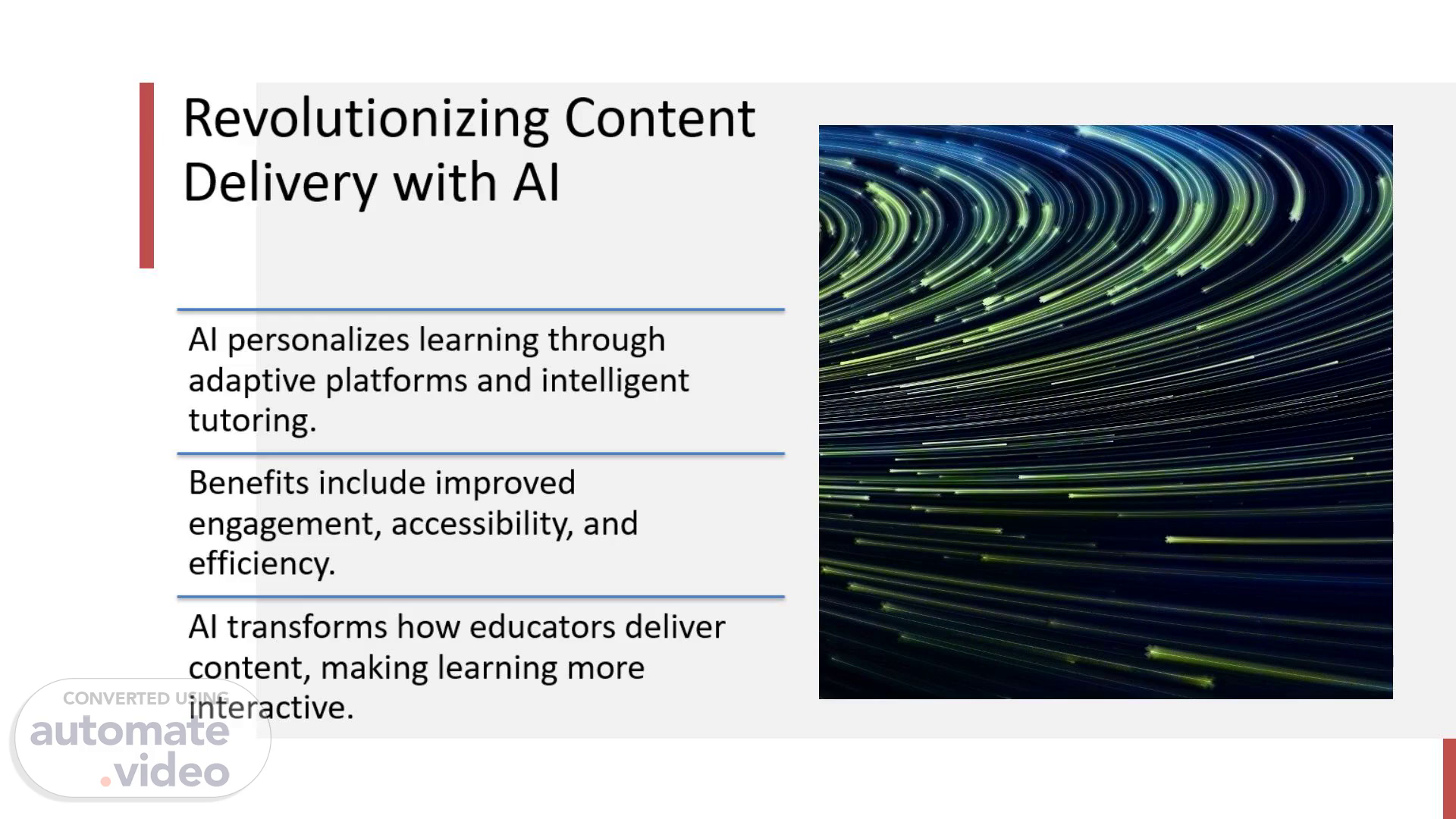Scene 1 (0s)
[Audio] "Artificial Intelligence is transforming education. Through adaptive platforms and intelligent tutoring systems, AI personalizes learning experiences to meet individual student needs. This leads to improved engagement, greater accessibility, and enhanced efficiency.
Scene 2 (19s)
[Audio] "PTable.com is a dynamic and interactive resource that brings the periodic table to life. It offers real-time data on elements, including electron configurations and atomic properties. This tool supports both visual and inquiry-based learning, making it ideal for chemistry education. When navigating the site, explore tabs like 'Properties', 'Orbitals', and 'Isotopes' to uncover rich, layered information about each element.".
Scene 3 (49s)
[Audio] "Let's explore atomic trends using the 'Properties' tab. Select 'Electronegativity' from the dropdown menu. Notice how the table color-codes elements based on their values. You'll observe that electronegativity increases across a period and decreases down a group. This is due to factors like increased nuclear charge and shielding effects. Now, switch to 'Atomic Radius'. Here, the trend is reversed—atomic radius decreases across a period and increases down a group. These visual cues help students grasp concepts more intuitively.".
Scene 4 (1m 28s)
[Audio] "Next, we delve into electron configurations. Click on the 'Orbitals' tab and hover over elements like sodium and chlorine. You'll see their electron configurations and orbital diagrams displayed clearly. For a deeper look, examine a transition metal like iron. This introduces students to the complexity of d-block and f-block elements, enriching their understanding of atomic structure.".
Scene 5 (1m 53s)
[Audio] "Finally, let's explore isotopes. Under the 'Isotopes' tab, select carbon to view its naturally occurring isotopes. Isotopes differ in the number of neutrons, which affects their stability and applications. For example, carbon-14 is used in radiocarbon dating. Now, look at uranium—a heavy element with multiple isotopes. Its isotopic abundance is crucial in nuclear power and fission. Remember, the periodic table isn't just a chart—it's a dynamic map of the universe. And PTable.com is your key to exploring it.".
